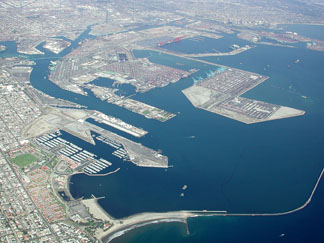 |
Pacific Puddle Jumpers Setting Sail for MarquesasMarch 4 - Nuevo Vallarta, Mexico 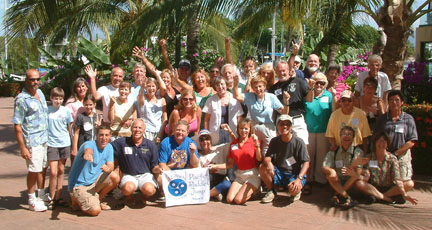 Many of this year's Pacific Puddle Jumpers met for the first time at our Paradise Village event. For generations, sailors have set sail for French Polynesia from the West Coast during March and April, as springtime has long been considered the best weather window for making that 3,000-mile passage. At this writing, roughly 40 boats are poised for departure at various ports along the Mexican mainland. On Monday, Latitude 38 honored many of this year's 'Puddle Jumpers' with a kick-off party at the Vallarta Yacht Club, located in Nuevo Vallarta within the beautiful Paradise Village Resort Complex. (Both the YC and the Resort were event co-sponsors.) 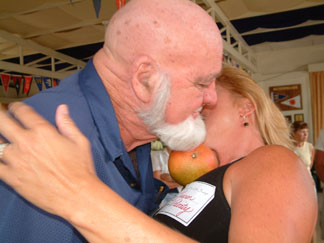 In our opinion, one of the best things to come out of the '50s was the party game called Pass the Orange. While others were being interviewed for their '15 minutes of fame' in the pages of Latitude 38, a line of game participants attempted to pass the orange to one another, holding it only with their chins. It's not easy. But, as Gary Cook of Navigator and Lauren Kutschka of Velocity learned, it's a great way to make new friends! Although few, if any, of these boats will sail in tandem, they will keep in touch during the crossing via HF radio, with the leaders relaying weather info back down the line. Look for a two-part report on this year's Puddle Jump fleet in the April and May issues of Latitude 38. 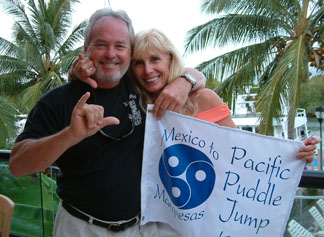 Brent and Susan Lowe of the Royal Passport 476 Akauahelo flew down to P.V. from Hawaii to meet this year's Puddle Jumpers. After dismasting last year, they will set sail for French Polynesia this season from the 50th state. 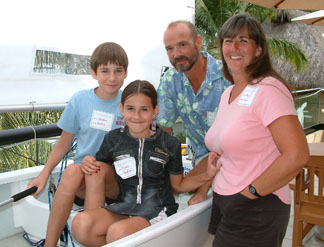 Meet the Dean family: (left to right) Jackson, 12, Naomi, 9, Bill and Karryn. Having cruised for more than three years already, they're now eager to begin a South Pacific circuit. 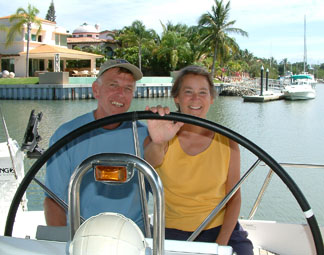 Bill and John McKnight of Sage, a Beneteau Oceanis 461, have been sailing together since their first date, many, many moons ago. They've loved their time in ol' Mexico, but are now anxious to see the South Pacific islands. Photos Latitude/Andy & Julie Turpin |
